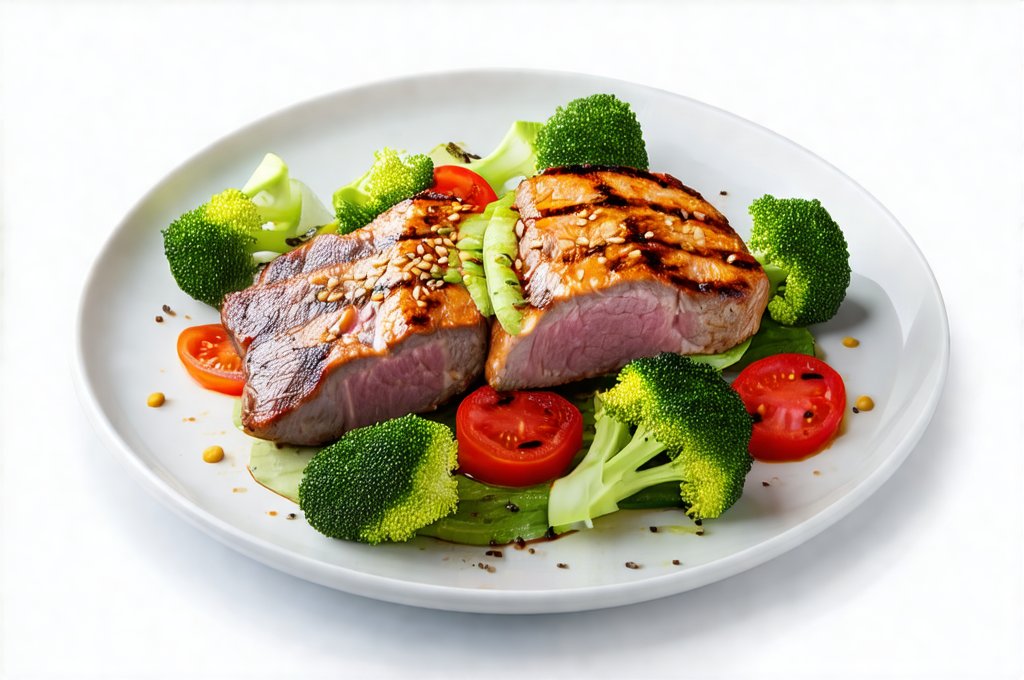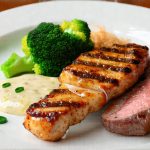Gastroesophageal reflux disease (GERD), commonly known as acid reflux, affects millions worldwide. While medication often plays a vital role in managing symptoms, dietary adjustments are equally crucial for long-term relief. Many people successfully manage their GERD with lifestyle changes, but navigating dining out while adhering to a GERD-friendly diet can feel like an impossible task. Restaurants aren’t always conducive to careful ingredient control or portion sizes, and the sheer variety of options can be overwhelming. This article will serve as your guide to confidently ordering food at restaurants – minimizing triggers and maximizing enjoyment – even with sensitive digestive systems.
Understanding how food interacts with GERD is key. Certain foods are notorious for exacerbating symptoms, increasing stomach acid production, or relaxing the lower esophageal sphincter (LES) – the muscle that prevents stomach contents from flowing back up into the esophagus. However, individual sensitivities vary greatly; what bothers one person might not affect another. This makes personalized dietary awareness essential. The goal isn’t necessarily elimination of entire food groups, but rather informed choices that support digestive health and minimize reflux episodes when enjoying a meal outside the home. A proactive approach – planning ahead, asking questions, and making mindful substitutions – will empower you to enjoy dining out without fear or discomfort. If you’re considering a more structured dietary change alongside this, exploring when to try an elimination diet might be helpful.
Navigating Restaurant Menus: General Strategies
The first step in successfully eating out with GERD is understanding general guidelines for trigger foods. While individual tolerance differs, there are common culprits that frequently worsen symptoms. These include high-fat foods (fried items, creamy sauces), spicy dishes, acidic foods (tomatoes, citrus fruits), chocolate, caffeine, carbonated beverages, and peppermint. This doesn’t mean you must avoid them forever, but be mindful of portion sizes and frequency. When reviewing a restaurant menu, look for preparation methods that minimize fat content – baked, grilled, steamed, or poached are preferable to fried. Consider asking your server about ingredients and cooking techniques; most restaurants are happy to accommodate dietary requests when possible. Don’t hesitate to request modifications! If you’re planning a trip while managing GERD, consider travel meal prep for more control over your diet.
Beyond specific foods, how you eat matters too. Eating large meals can put pressure on the LES, increasing the risk of reflux. Opt for smaller, more frequent portions throughout the day. Chew your food thoroughly – this aids digestion and reduces strain on the stomach. Avoid eating late at night; allow at least 2-3 hours between your last meal and bedtime. Staying upright after eating also helps prevent acid from flowing back up into the esophagus. Finally, be mindful of beverage choices. Water is always the best option, while alcohol and carbonated drinks should be limited or avoided altogether. Remember that restaurant portion sizes are often significantly larger than home-cooked meals; consider sharing an entrée or asking for a half-portion if available. Understanding gut-friendly eating can also provide valuable insights.
Common Cuisine Challenges & Solutions
Many popular cuisines present unique challenges for individuals with GERD. Italian food, while beloved, frequently features high-fat cheeses, tomato-based sauces, and garlic – all potential triggers. However, you can still enjoy Italian dining by choosing grilled chicken or fish with steamed vegetables, opting for olive oil-based sauces instead of cream sauces, and requesting modifications to minimize tomato content (e.g., a light drizzle rather than a full sauce). Similarly, Mexican cuisine often relies on spicy peppers, fried foods, and sour cream. Opt for lean protein tacos with minimal toppings, grilled fish fajitas, or chicken enchiladas with a small amount of cheese and avocado. Indian cuisine, known for its rich spices and creamy sauces, can also be problematic; choose tandoori dishes (cooked in a clay oven) which are generally lower in fat, and avoid curries made with heavy cream or excessive spice.
Asian cuisines present their own set of considerations. Chinese food frequently involves deep-fried items and MSG, while Thai cuisine often utilizes chili peppers and coconut milk. Japanese sushi can be a good option, but be mindful of spicy tuna rolls or tempura (deep-fried). Vietnamese pho (noodle soup) is generally well-tolerated, but avoid excessive use of hoisin sauce. The key across all cuisines is to be proactive. Review the menu online beforehand if possible, identify potential triggers, and formulate questions for your server. Don’t be afraid to customize your order – restaurants are often happy to accommodate dietary needs.
Decoding Restaurant Dishes: What to Look For
When faced with a restaurant menu, focus on identifying dishes that align with GERD-friendly principles. Lean proteins (grilled chicken, fish, turkey) are excellent choices. They provide essential nutrients without adding excessive fat or triggering reflux. Steamed vegetables offer fiber and vitamins while being gentle on the digestive system. Whole grains like brown rice or quinoa are preferable to white rice or refined carbohydrates. Avoid dishes that are fried, heavily sauced, or contain large amounts of cheese. Look for options described as “baked,” “grilled,” “steamed,” or “poached.”
- Ask about ingredients: Don’t hesitate to inquire about specific components of a dish, such as the type of oil used in cooking or the presence of hidden spices.
- Request modifications: Most restaurants are willing to accommodate dietary requests. Ask for sauces on the side, substitutions (e.g., steamed vegetables instead of french fries), or smaller portions.
- Beware of hidden triggers: Be aware that seemingly harmless dishes can contain unexpected GERD triggers. For example, salad dressings often contain acidic ingredients, and even bread may be made with butter or oil. If you’re experiencing dizziness when lying down, it’s important to address the underlying GERD as well.
Smart Ordering Strategies: Beyond the Main Course
The main course is often the focus when dining out, but it’s important to consider all aspects of the meal. Appetizers can be particularly challenging; avoid fried calamari, spicy wings, or creamy dips. Instead, opt for a simple salad with vinaigrette dressing (on the side) or a small portion of steamed edamame. Be mindful of drinks – water is always the best choice, while alcohol and carbonated beverages should be limited.
- Dessert Dilemmas: Chocolate, peppermint, and coffee are common dessert ingredients that can trigger reflux. If you have a sweet tooth, choose fruit salad or a small portion of sorbet.
- Condiment Caution: Even condiments can contribute to GERD symptoms. Avoid spicy mustard, ketchup (due to its acidity), and mayonnaise (high in fat). Opt for plain yogurt or avocado as healthier alternatives.
- Portion Control is Paramount: Remember that restaurant portions are often larger than necessary. Consider sharing an entrée with a friend or asking for a half-portion if available.
Long-Term Management & Personalization
While these strategies can significantly reduce GERD symptoms when dining out, remember that long-term management requires ongoing awareness and personalization. Keep a food diary to identify your specific triggers – what bothers one person may not bother another. Pay attention to how different foods affect you and adjust your diet accordingly. Consider consulting with a registered dietitian or gastroenterologist for personalized guidance. If your digestive system feels off, it might be time to assess signs your diet needs a reset.
- Listen to Your Body: The most important thing is to pay attention to your body’s signals. If a particular food consistently causes symptoms, eliminate it from your diet.
- Stay Hydrated: Drinking plenty of water helps dilute stomach acid and promotes digestion.
- Manage Stress: Stress can exacerbate GERD symptoms; practice relaxation techniques such as yoga or meditation.
Dining out with GERD doesn’t have to be a stressful experience. By understanding the principles outlined above, planning ahead, asking questions, and making mindful choices, you can enjoy delicious meals without compromising your digestive health. Remember that personalization is key – identify your specific triggers and adjust your diet accordingly. With a little effort, you can confidently navigate restaurant menus and savor the joy of dining out.


















